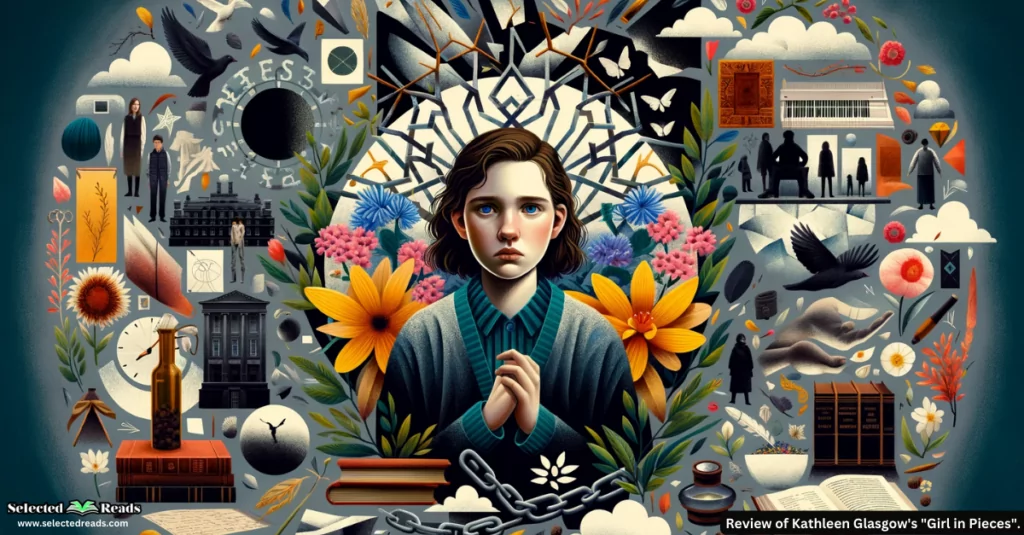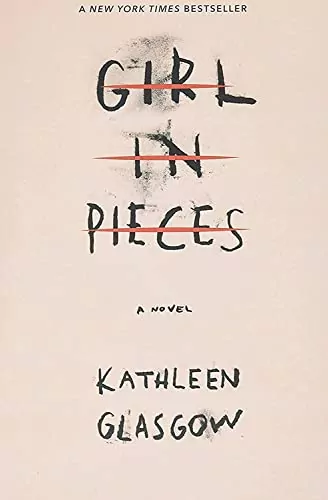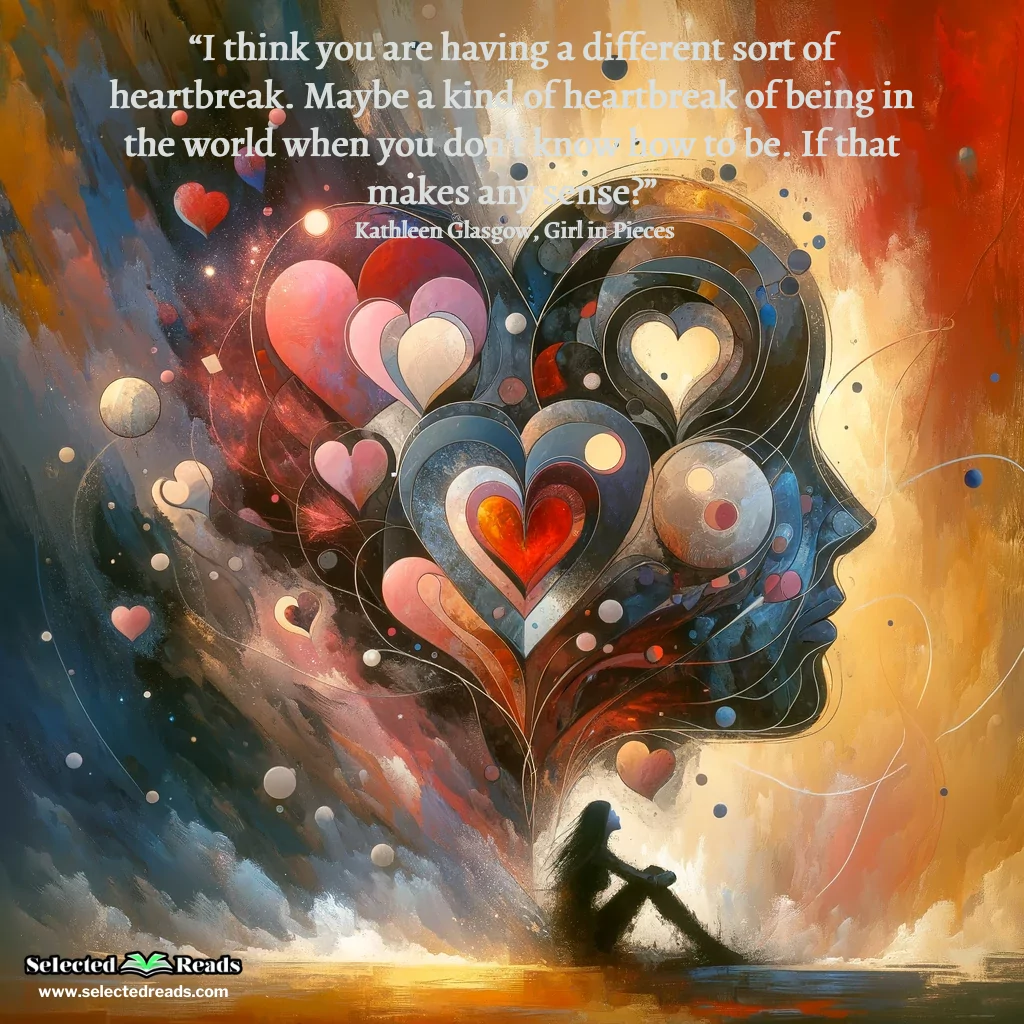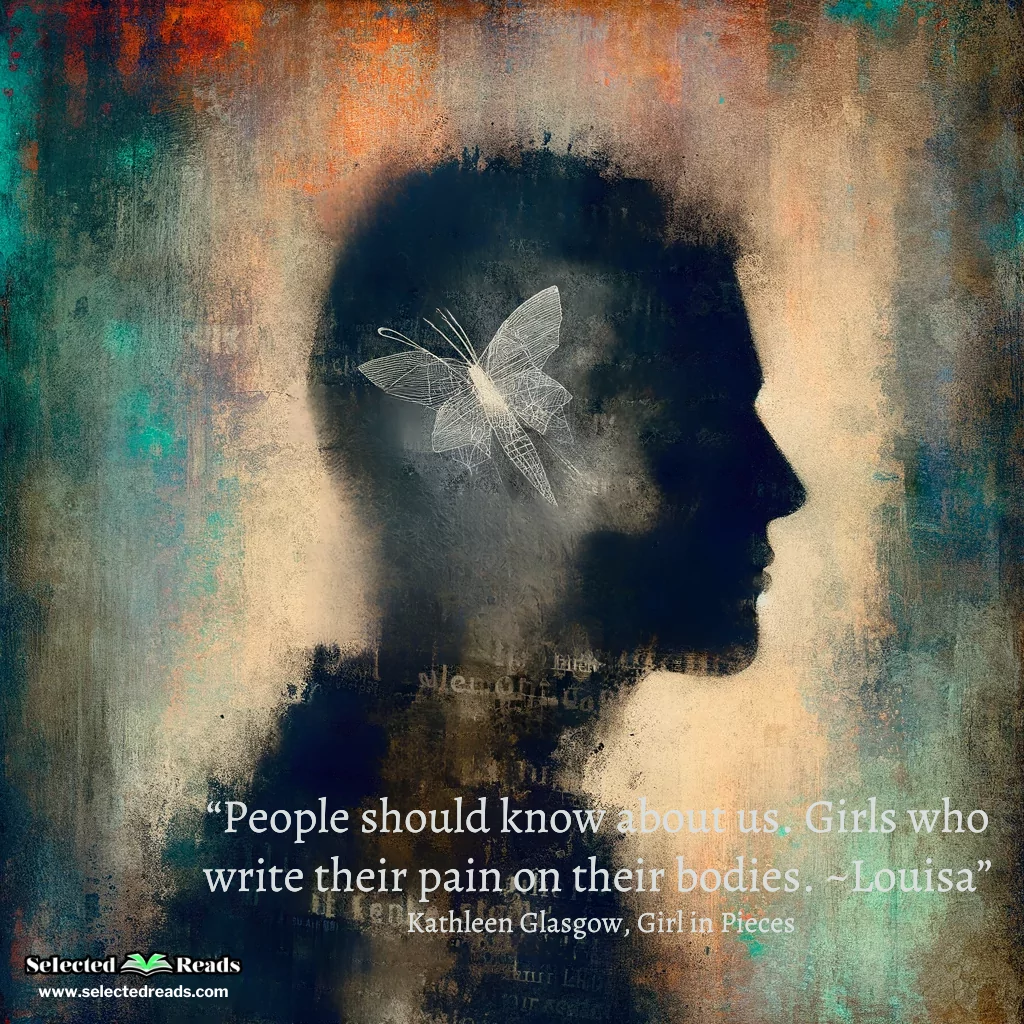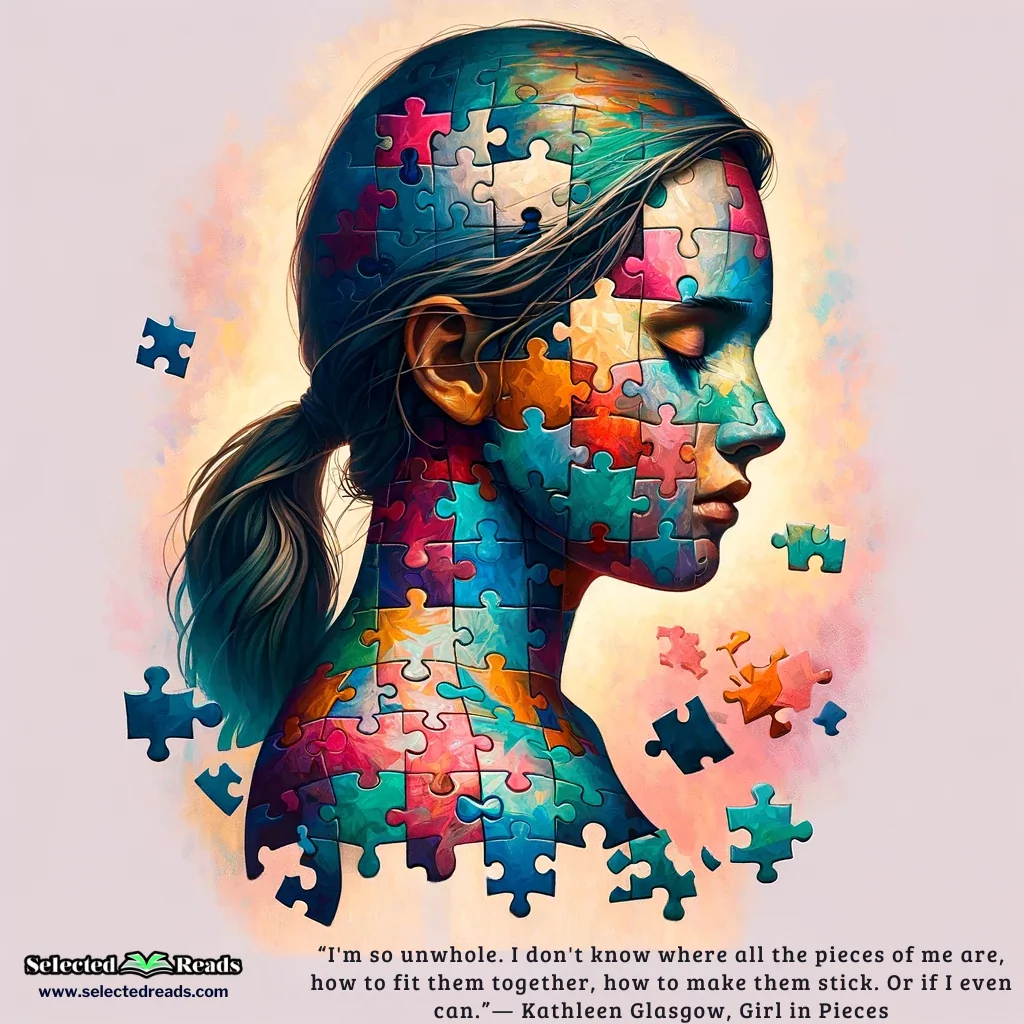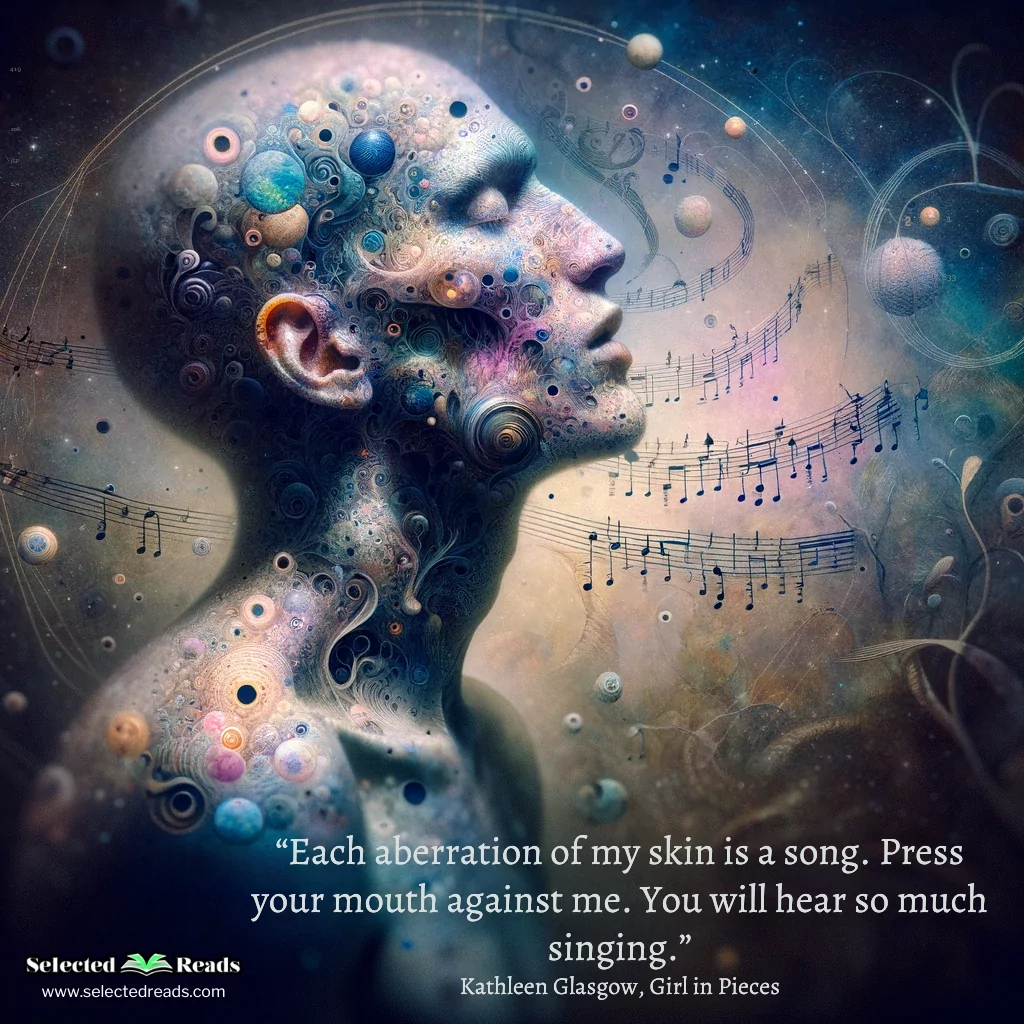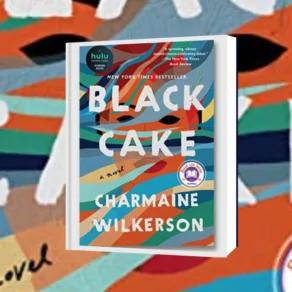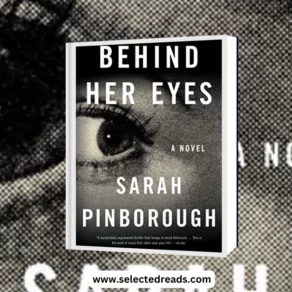In today’s post, we will cover Kathleen Glasgow’ s “Girl in Pieces”. We will delve into various facets of this poignant and impactful novel. More specifically, we’ ll provide a comprehensive summary, a detailed look at the key characters, a selection of thought-provoking quotes, and stimulating book club questions. This multifaceted approach aims to provide a thorough understanding of the novel’s themes, character dynamics, and the profound messages embedded within its pages.
Girl in Pieces Summary
“Girl in Pieces” by Kathleen Glasgow is a profoundly moving and visceral account of a young girl’s struggle to find her footing in a world that seems to have abandoned her. At the center of this narrative is Charlotte Davis, known as Charlie, a seventeen-year-old who has endured more trauma and loss than most people face in a lifetime.
The novel doesn’t shy away from the stark realities of Charlie’s life, including self-harm, as Glasgow portrays a character who uses physical pain as a means to escape emotional suffering.
The journey of Charlie is heart-wrenching yet beautifully depicted. She is grappling with the haunting memories of a father lost to suicide, a best friend who she can no longer turn to, and a mother who is emotionally unavailable.
The story eloquently captures the essence of pain and the process of self-harm, not as a subject of sensationalism, but as a harsh reality for many young people. Charlie’s scars are both literal and metaphorical, marking the deep emotional and physical traumas she has endured.
Glasgow’s narrative style is unflinching and raw, presenting a character study that is both intimate and harrowing. The book does an exceptional job of portraying the complexities of mental health, trauma, and recovery without romanticizing or trivializing the protagonist’s struggles. It’s a reminder of how the road to recovery is often non-linear and fraught with setbacks.
“Girl in Pieces” is more than just a story of pain and struggle; it’s also a testament to resilience and the undying hope of finding a way back from the brink. The journey that Charlie undergoes in putting herself back together is a powerful metaphor for healing and finding strength in vulnerability.
As an educator and someone passionate about young adult literature, this book holds significant value. It’s an important read for those who wish to understand the depths of mental health issues in adolescents.
Glasgow’s narrative provides a platform for discussions around topics often considered taboo, making it a potentially valuable addition to discussions in classrooms or educational settings, especially those focusing on mental health and emotional well-being.
Overall, “Girl in Pieces” stands out as a raw, unfiltered exploration of a young person’s battle with mental health, and Glasgow’s writing ensures that the story remains both impactful and respectful to the gravity of its themes.
Girl in Pieces Characters
“Girl in Pieces” by Kathleen Glasgow features several compelling characters, each contributing to the novel’s exploration of trauma, healing, and resilience. Here’s a closer look at the key characters:
- Charlotte Davis (Charlie): The protagonist, a seventeen-year-old girl grappling with immense trauma and pain. Charlie’s journey through self-harm, loss, and recovery forms the core of the narrative. She’s a character who embodies the struggles of dealing with mental health issues, particularly in the turbulent years of young adulthood.
- Charlie’s Mother: Her relationship with Charlie is strained and complex. She is depicted as emotionally distant and unable to provide the support Charlie desperately needs. This dynamic adds a layer to Charlie’s struggle as she navigates her journey largely alone.
- Charlie’s Father: Although he is not present in the story, having died by suicide, his absence deeply affects Charlie. Her father’s death is a significant part of her trauma and shapes much of her emotional landscape.
- Mikey: A character who becomes an important part of Charlie’s life. His interactions with Charlie bring a different perspective to her journey, highlighting themes of connection and the impact of others in our paths to recovery.
- Riley: Another pivotal character in Charlie’s life. His relationship with Charlie introduces themes of love, complexity, and the challenges of supporting someone through mental health struggles.
- Blue: Charlie’s best friend, who represents a significant loss in her life. Blue’s absence is a source of grief and a pivotal aspect of Charlie’s emotional turmoil.
Girl in Pieces Quotes
Here are some interesting quotes that capture the thematic essence of Girl in Pieces:
“I think you are having a different sort of heartbreak. Maybe a kind of heartbreak of being in the world when you don’t know how to be. If that makes any sense?”― Kathleen Glasgow, Girl in Pieces
“That’s how hearts get broken, you know. When you believe in promises.”― Kathleen Glasgow, Girl in Pieces
“People should know about us. Girls who write their pain on their bodies. ~Louisa”― Kathleen Glasgow, Girl in Pieces
“I remember the stars that night. They were like salt against the sky, like someone spilled the shaker against very dark cloth. That mattered to me, their accidental beauty.”― Kathleen Glasgow, Girl in Pieces
“I’m so unwhole. I don’t know where all the pieces of me are, how to fit them together, how to make them stick. Or if I even can.”― Kathleen Glasgow, Girl in Pieces
“I just want to feel better. My own body is my deepest enemy. It wants, it wants, it wants and when it does not get, it cries and cries and I punish it. How can you live in fear of your own body?”― Kathleen Glasgow, Girl in Pieces
“Each aberration of my skin is a song. Press your mouth against me. You will hear so much singing.”― Kathleen Glasgow, Girl in Pieces
“I’m so lonely in the world I want to peel all of my flesh off and walk, just bone and gristle, straight into the river, to be swallowed.”― Kathleen Glasgow, Girl in Pieces
Girl in Pieces Book Club Questions
Here are some thought-provoking questions to guide your discussion:
- Charlie’s Journey: How does Charlie’s journey of healing and recovery reflect the challenges faced by those dealing with trauma and mental health issues? What aspects of her journey did you find most compelling or relatable?
- The Role of Art: Glasgow uses art as a significant theme in the novel. How does Charlie’s interaction with art contribute to her healing process? What does this suggest about the role of creativity in coping with trauma?
- Support Systems: Consider the various relationships Charlie has throughout the book. How do these relationships impact her recovery? Discuss the importance of support systems in the context of mental health.
- Depiction of Mental Health: How effectively do you think the book portrays mental health, particularly self-harm and trauma? Did it change or reinforce your understanding of these issues?
- Character Analysis: Which character, aside from Charlie, did you find most intriguing and why? How do they contribute to the overall narrative and themes of the book?
- Setting and Atmosphere: How does Glasgow use setting and atmosphere to reflect Charlie’s emotional state and journey? Discuss specific scenes where the setting significantly impacts the mood or development of the story.
- Themes of Resilience and Hope: Despite its heavy themes, the book also explores resilience and hope. How are these themes presented, and what message do you think the author is trying to convey about overcoming adversity?
- The Ending: What are your thoughts on the book’s ending? Do you find it hopeful, realistic, or something else? How does the ending contribute to your overall perception of the book?
- Personal Reflection: Was there a particular moment or aspect of the book that resonated with you personally? How did it affect your reading experience?
- Comparative Literature: If you’ve read other books dealing with similar themes (trauma, recovery, mental health), how does “Girl in Pieces” compare? What unique perspectives does this book bring to these topics?
Concluding thoughts
“Girl in Pieces” by Kathleen Glasgow is a raw and powerful narrative that does more than just tell a story; it offers a window into the complexities of mental health, trauma, and the resilience of the human spirit. Through our exploration of the book’s summary, characters, impactful quotes, and discussion questions, we gain a deeper appreciation of Glasgow’s skill in weaving a tale that is both heart-wrenching and hopeful.
This novel is not only a significant read for those interested in young adult literature but also a valuable resource for educators, parents, and anyone seeking to understand the multifaceted nature of trauma and recovery.



